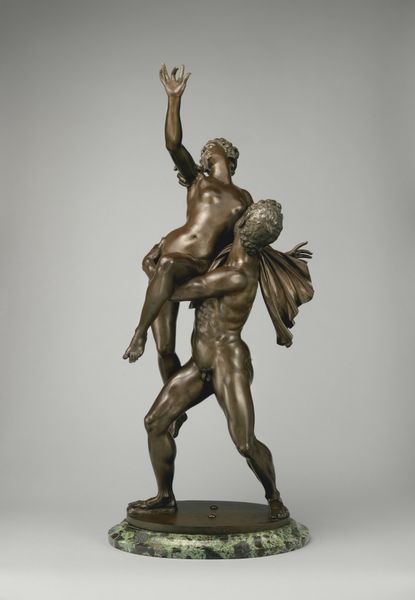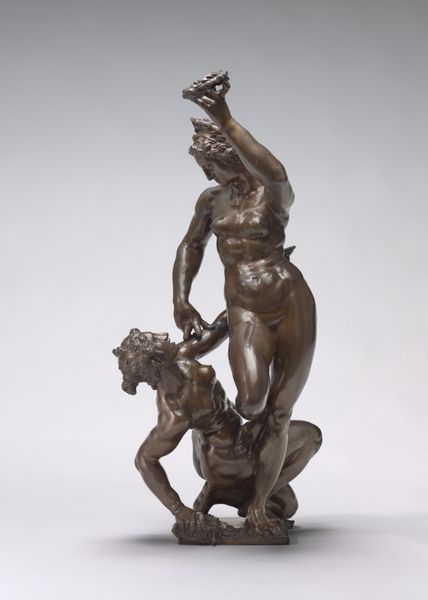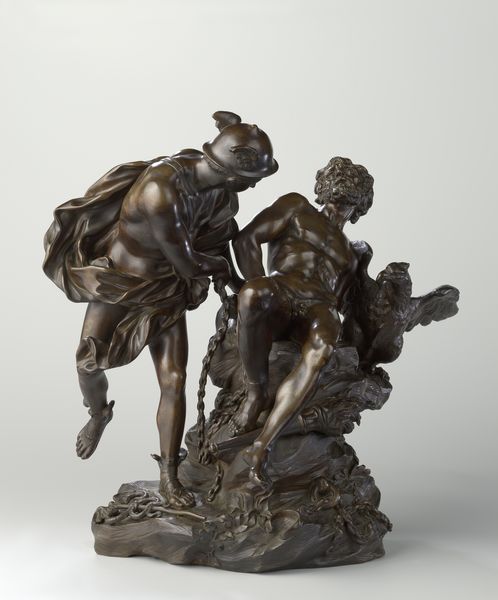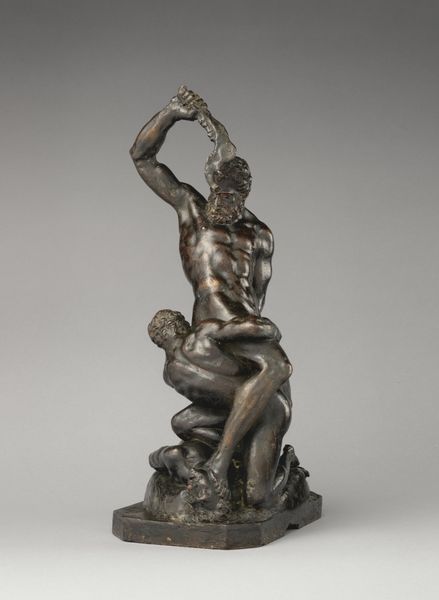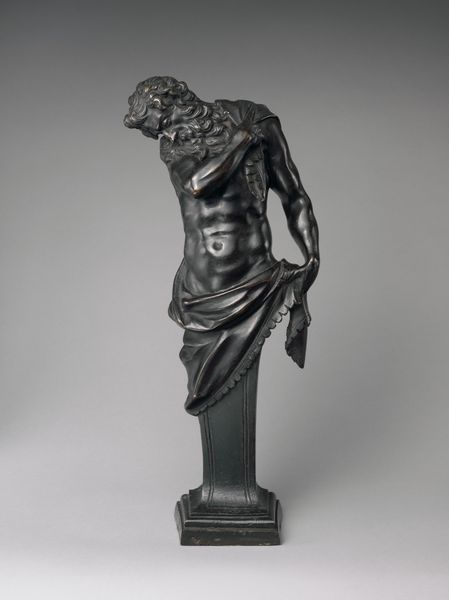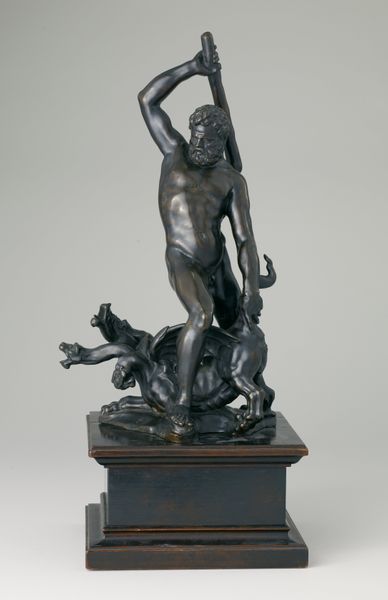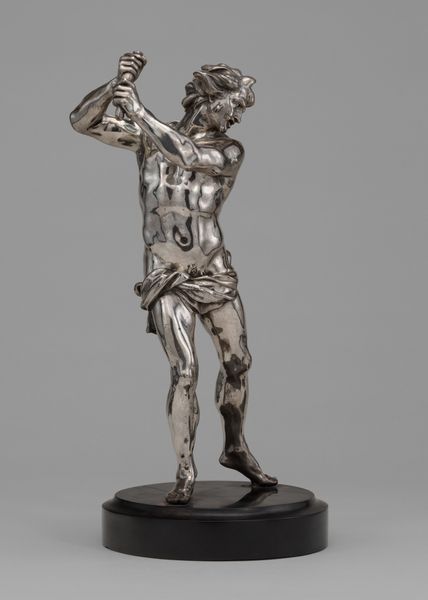
bronze, sculpture
#
statue
#
3d sculpting
#
baroque
#
stone
#
sculpture
#
bronze
#
figuration
#
sculpting
#
sculpture
#
history-painting
#
statue
Dimensions: overall: 90.5 x 36.8 x 37.6 cm (35 5/8 x 14 1/2 x 14 13/16 in.)
Copyright: National Gallery of Art: CC0 1.0
Editor: This is François Coudray's bronze sculpture, "Saint Sebastian," created in 1712. I’m struck by the curve of his body and the polished surface of the bronze. The composition leads your eye along a spiraling path. What elements stand out to you? Curator: Certainly, the formal elements construct the narrative here. Observe how the contrapposto stance isn't merely anatomical; it creates a visual tension, a struggle mirrored in the textured contrast between the smooth flesh and the rough bark of the tree. The lines pull the eye upwards, but the head slumps down and arrests this ascent. Editor: So, you're seeing a play between upward aspiration and downward drag represented in the figure itself? Curator: Precisely. Consider also the artist's manipulation of light and shadow. The high polish on Saint Sebastian's skin catches the light, drawing attention to his idealized form, while the shadowed areas surrounding the wounds emphasize suffering. It’s the interplay of luminosity and darkness that evokes the drama inherent to martyrdom. The artist even uses semiotics, presenting the ideal of religious faith tested by bodily endurance. Editor: I see what you mean about the light now. It's almost like there are two separate forms in the piece battling it out for attention. The beautiful man versus the wounded saint. It is as if Saint Sebastian is composed of dual realities. Curator: Yes, we could interpret that duality within the sign. And what then do you think we may now infer regarding the whole from an aesthetic view? Editor: Thinking of the whole, what started as just a single image has, thanks to you, become so much more complex in terms of how I view art! Thanks. Curator: Indeed, may we all remember to attend to that dance of light and form, not only in artworks such as "Saint Sebastian" but in life.
Comments
No comments
Be the first to comment and join the conversation on the ultimate creative platform.

